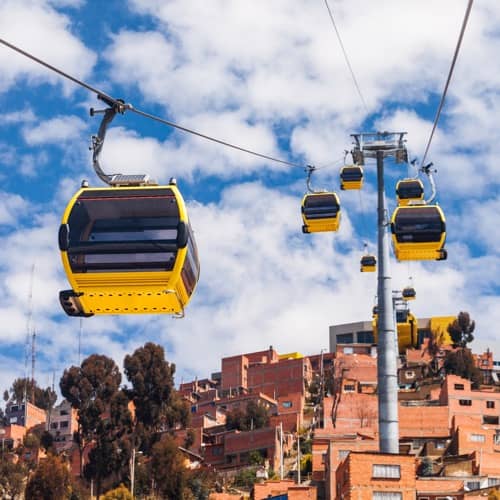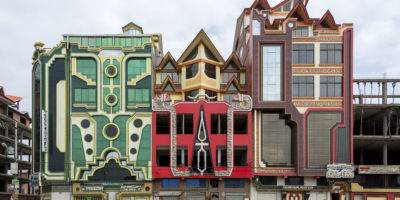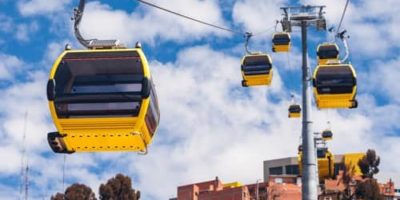“Beware of altitude sickness. You will be tired all day, you will lack strength. Chew coca leaves, that’s what they do. Be prepared for a headache”.
If you are going to visit Bolivia, anyone who has already been there will not stop warning you about altitude sickness; it is the reasonable thing to do if you land at 4061 meters above sea level.
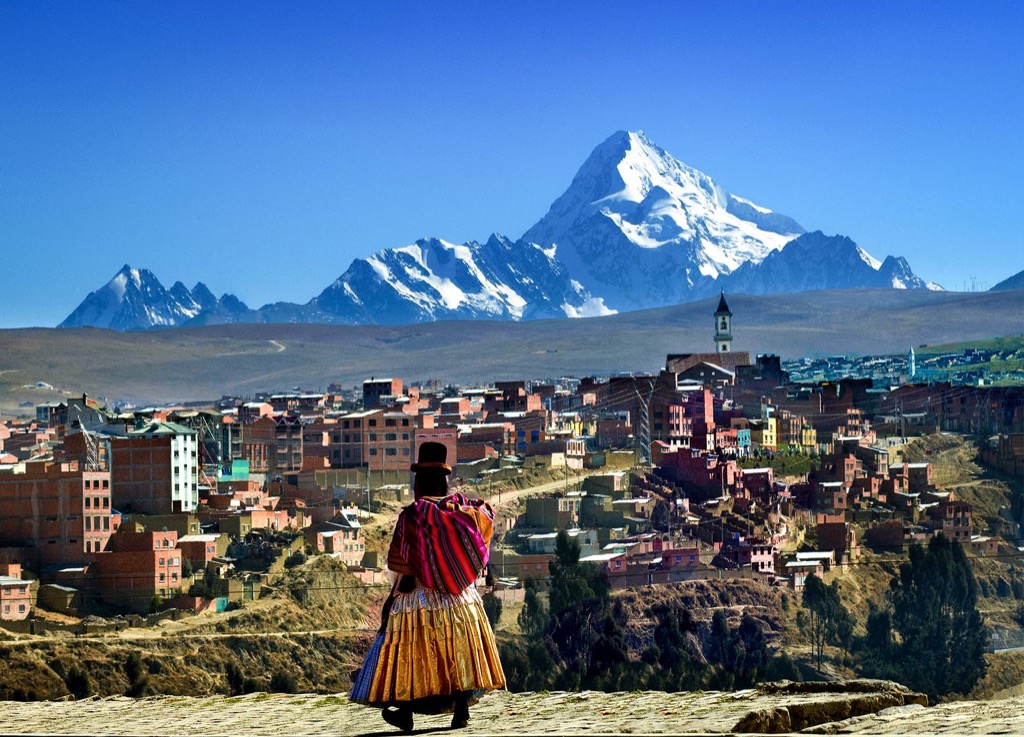
But it’s not the only thing you’ll encounter in La Paz.
Until you set foot on the ground, your only fear and concern is your health. You leave the plane without haste, even if the plane is delayed.
You ask for a cab, taking a deep breath, trying to detect that the air has less oxygen than usual. You don’t notice much, but you’ve already been told that it’s normal, that tomorrow the worst will begin.
And, suddenly, you realize.
You are in the middle of a pack of cars and vans without order or order, on a winding highway without lanes where you are sure to have an accident.
Overtaking is a game of chance and accelerating is the only way to avoid the inevitable accident. Meanwhile, your driver shows no signs of nervousness or concern.
What is this?
Welcome to La Paz.

India has the reputation. You see thousands and thousands of photos of giant avenues packed with motorcycles and cars in all directions and directions. La Paz has no big avenues, but it does have traffic chaos, and not only of cars, but also of people. The “cholitas” take the limelight away from this urban fauna.
What is known as the “Tourist Center” is a grid of streets where cars circulate in one direction and pedestrians wherever they can.
The sidewalks are used as store windows and it is where the cholitas are located to, day after day, offer the products they sell while breastfeeding their child, eat and watch life go by at a speed that few would endure.
Much of the blame for this chaos lies with the vans or minibuses, as they are called there. They are imported vans, mostly Asian, and some of them still bear the name of the Korean or Japanese company to which they belonged. Almost all are from Japanese manufacturers and have end-to-end seating.
They fit three people per row and do not expect to be comfortable, even on a trip of several hundred kilometers. This is the most used public transport in La Paz.
With no official stops, you have to look at signs that the driver puts on the windshield to know where he is going, and if it is convenient for you, open the door and get on.
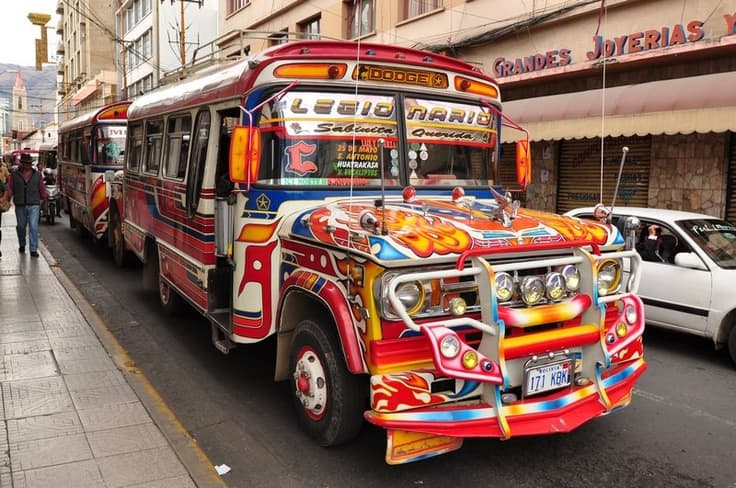
Depending on the model, you can fit up to 12 people and, yes, two ride next to the driver, who is not comfortable either.
When you arrive at your destination, you simply say “I’ll get off here” and the van will stop next to the sidewalk, wherever and whoever it bothers; custom has ensured that no one is bothered by this maneuver.
This chaos also makes you agile, so that stop barely lasts five seconds. You pay cash on the way out, there are no cards or monthly passes; two bolivianos and off you go.
It’s crazy, because they look like private vans, but they are everywhere and you don’t have to be a scientist to realize that they account for more than half of the traffic jam problem in La Paz.
Less surprising but more bizarre are the microbuses, which from the name seem smaller than minibuses, but are like typical American school buses repainted for the occasion. I doubt that there are any manufactured later than the 1990s.
The sidewalks in downtown La Paz are the closest thing to walking through downtown Madrid at Christmas, only all the time. They are narrow because the space for cars is maximized (actually for vans, because cars are few; motorcycles, almost none) and in them are located the products that are sold in the stores as an urban showcase and the cholitas street vendors.
In addition, the traffic chaos is transferred to pedestrians. Conclusion: don’t stop, you always have to move.
Nobody pushes you, they always dodge you. It is easy to adapt and you get hooked. Go, dodge, go, dodge, but don’t stop in your tracks.
Crossing the street is the ultimate adventure. Changing sidewalks is a task you know will end your life, or at least a visit to the nearest hospital.
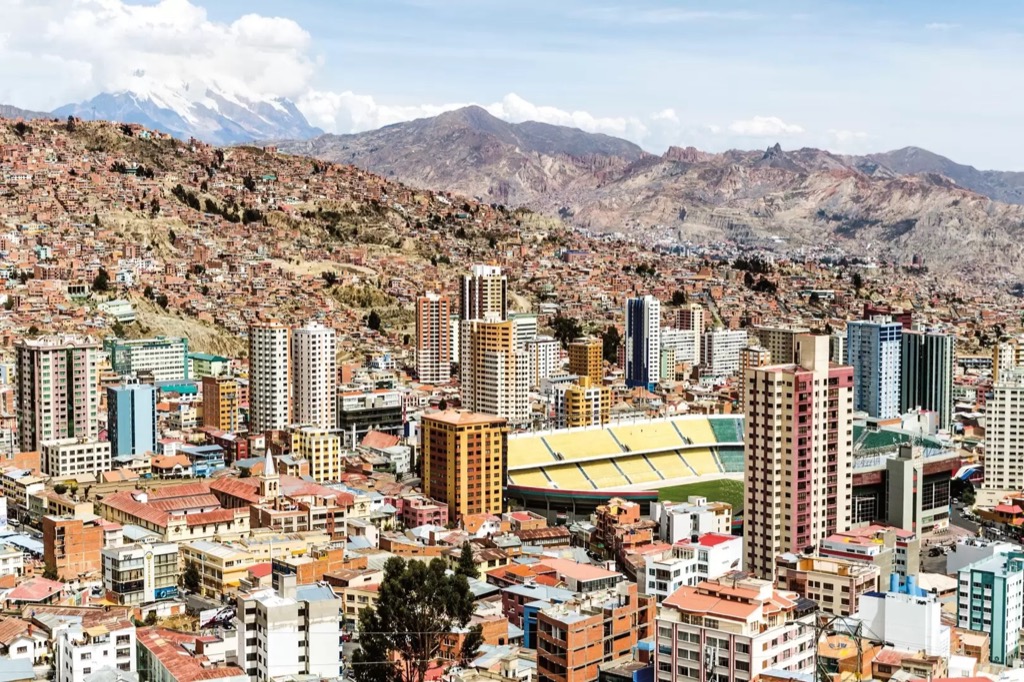
The traffic chaos means that vehicles cannot travel very fast. It is a mass of vehicles moving compactly through the city. A traffic jam that doesn’t stop, but doesn’t stop either.
Whether there is a crosswalk or not, the procedure is the same: whoever goes first has the right of way. If you get to the intersection with the car before him, he will stop without honking at you or insulting you, that’s how it works.
A centimeter away from your leg, but he will stop. If you get scared and brake hard, maybe the car in the other lane will run you over, because if you hadn’t braked, it would have already passed. First you do it one way, then the other way.
It is fascinating to see how the drivers of La Paz manage their space. Despite this chaos, they are not seen to be upset and it is rare to hear the horn honking.
It is no coincidence: the vans use the horn to warn of their presence and convenience. If you are standing in the middle of a sidewalk you are expecting a van, there is no other.
There are two crucial points in which to admire this dynamic: the intersection between Murillo and Santa Cruz streets and the Plaza del Estudiante.
The first is a perpendicular intersection of streets with, let’s say, two lanes each, and the second is a traffic circle at the exit of the tourist center of La Paz. At the corner of Murillo, many people are concentrated on their way to take vans to another part of the city.
With no official stops, the paceños tend to congregate in the same place so that the van does not have to stop so many times.
With barely enough space for two of these cars, one lane is constantly occupied by some stops picking up or dropping off passengers, while on the other side they circulate normally.
The intersection is not marked with traffic lights, so the law of “first come, first served” is strictly enforced, for pedestrians and vehicles alike. It is a circus. The Plaza del Estudiante is another matter.
Vehicles enter and move forward centimeter by centimeter, in the direction they are going and following the same law of preference that prevails at intersections.
The first time you get there you think you’re going to be stuck for fifteen minutes, but no, the chaos makes the traffic flow.
It’s amazing.
As you walk along the sidewalks crowded with products and people, successfully cross the street and try to take a picture, the altitude sickness psychosis has passed.
You will suffer from it, yes, but it’s not that bad and it won’t affect your trip. La Paz is not a flat city, it has slopes and stairs that leave you breathless, literally and metaphorically.
You are not the only one, the paceños will not climb much faster than you, rest assured. Lack of oxygen affects everyone without exception. La Paz deserves more days of visitation than it normally gets as a mere link to the Uyuni salt flats or the mines of Potosi.
There is a sense of security uncommon in other South American countries. Don’t expect smiles, but do expect a people conscious and proud of their roots, who open the door of a millenary culture to those who are willing to go through it.
